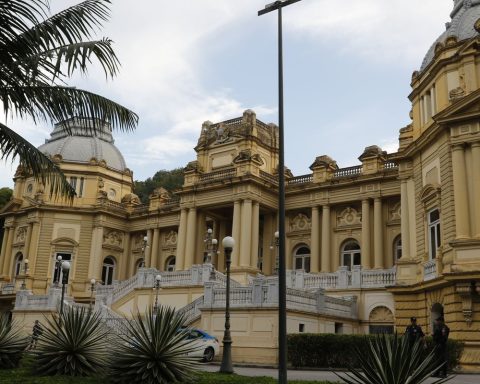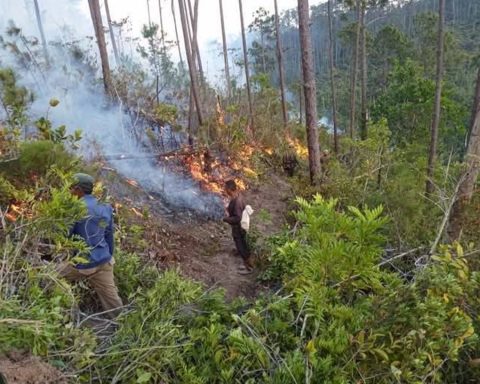Argentina accumulates eleven consecutive years of temperatures above historical averages and four with rainfall below the annual average according to the 2021 report presented this Wednesday by the National Meteorological Service, whose director, Celeste Saulo, stated in dialogue with Télam that “the data indicate that the rains will continue below the average at least until the third quarter.”
The presentation of the 2021 report of the National Meteorological Service (SMN) was led by the Defense Minister, Jorge Taiana, at the Córdoba Observatory together with Celeste Saulo and the province’s Minister of Public Services, Fabián López.
The activity took place within the framework of the world meteorological day proposed by the World Meteorological Organization (WMO) and as the opening of the celebrations planned for the 150th anniversary of the creation of the NMS to be held in October.
Regarding the 2021 report, the head of the SMN pointed out that “Argentina has recorded eleven consecutive years with temperatures above normal, which shows that our country also suffers the consequences of global warming; last year was the fifth warmest in history with warm maximums in Patagonia of more than a degree above the average maximum, which is a lot.”
“Our country also records four consecutive years with rainfall below normal, especially in the mountain range where the decrease in snowfall affected productive activities; also in 2021 we had the most important drop in the Paraná River since 1944 as a result of the rainfall deficit in the entire Plata basin, “he indicated.
The official mentioned that “last year there were also specific events such as extremely long heat waves that affected the health of the population and intense rainfall in which in areas such as the Dolores district of Buenos Aires it rained in one day what it rains on average in one season”.
“The phenomenon of ‘La Nina‘ it does not impact all places in the same way, it is possible that entering the fall its manifestations are not as clear as during the spring, but globally it continues to be what we know as ‘La Niña’; all our forecasts indicate that we are going to continue with rainfall below normal at least until the third quarter with the exception of some specific phenomenaalthough four consecutive years of drought are not going to recover to a productive level with some storms,” he considered.
“In Argentina, substantial investments were made such as the Sinarame project (National Meteorological Radar System) that today allows us to give early warnings with a degree of precision, but we need to continue strengthening the financing of the SMN because the network of monitoring stations is still too small. in the face of the extension of our country”, concluded Saulo.
Argentina’s 2021 weather report produced by the SMN maintains that “after an extremely warm 2020, 2021 also presented an average temperature above normal at the country level, ranking as the fifth warmest year for Argentina since 1961. Globally, although average temperatures temporarily cooled by La Niña events from 2020-2022, 2021 was one of the seven warmest years on record, according to six leading international data sets consolidated by the World Meteorological Organization (WMO).”
As for rainfall, in 2021 deficit conditions were observed at the country level. This year was ranked 13th among the driest since 1961. This is analogous to what happened in 2020, one of the driest years recorded since 1961 and the driest since 1995 (SMN, 2021); at the regional level, 2021 was marked by the sustained and extensive drought that began in mid-2019 and affected the Plata Basin, due to its prolonged duration and severity, said drought has had a considerable impact on the ecosystems, economies and populations of the Basin “, adds the report available on the agency’s website.
















